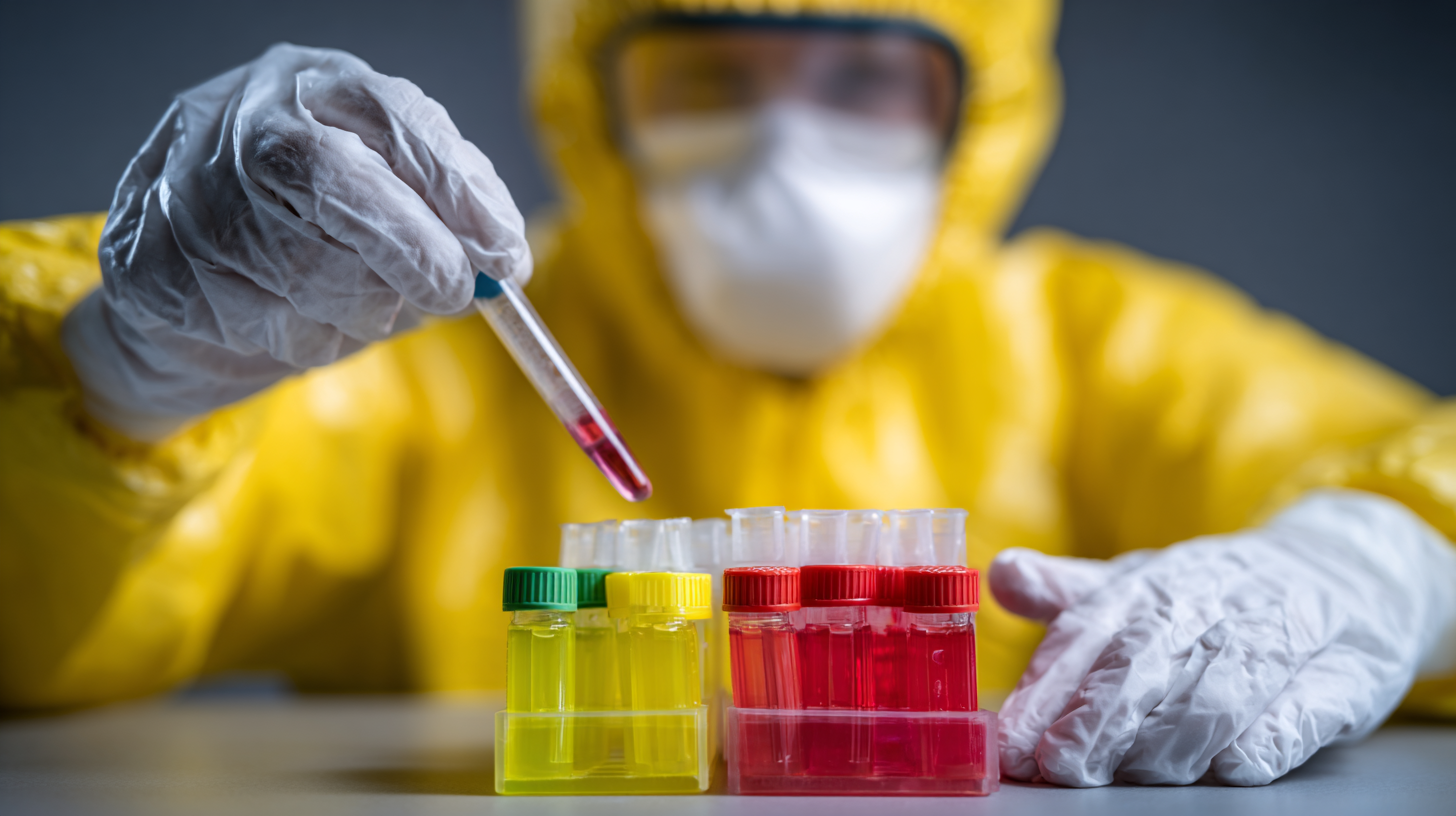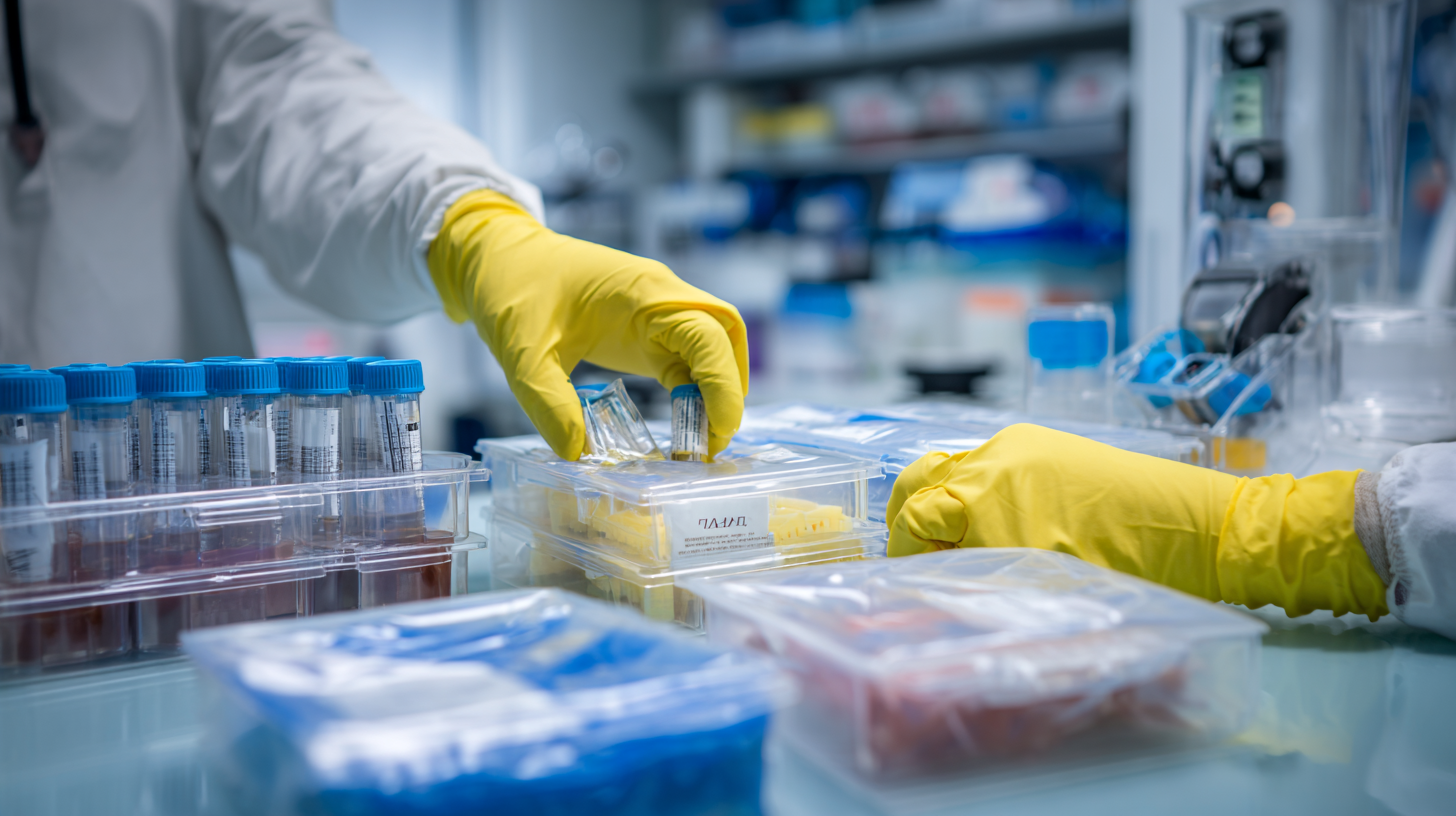 +86 178 5514 5298
+86 178 5514 5298
Leave Your Message
-
 CONTACT NUMBER
CONTACT NUMBER -
 CONTACT NUMBER
CONTACT NUMBER -
 CONTACT NUMBER
CONTACT NUMBER



 In the realm of laboratory safety, the significance of biohazard specimen transport bags has become increasingly vital as the world faces emerging health threats and stricter regulatory standards. According to a report by the Global Health Security Index, nearly 60% of countries are not prepared to handle biological threats effectively, underscoring the need for robust protocols in specimen handling and transportation. Biohazard specimen transport bags are specifically designed to ensure the safe collection, handling, and delivery of hazardous biological samples, minimizing the risk of contamination and exposure. The increasing adoption of these specialized bags reflects a growing awareness of laboratory safety protocols, with the biohazard transport bag market projected to grow significantly, driven by advancements in technology and regulatory compliance. As we look ahead to the technological development trends of 2025, it is imperative that laboratories prioritize the use of biohazard specimen transport bags to enhance safety and operational efficiency.
In the realm of laboratory safety, the significance of biohazard specimen transport bags has become increasingly vital as the world faces emerging health threats and stricter regulatory standards. According to a report by the Global Health Security Index, nearly 60% of countries are not prepared to handle biological threats effectively, underscoring the need for robust protocols in specimen handling and transportation. Biohazard specimen transport bags are specifically designed to ensure the safe collection, handling, and delivery of hazardous biological samples, minimizing the risk of contamination and exposure. The increasing adoption of these specialized bags reflects a growing awareness of laboratory safety protocols, with the biohazard transport bag market projected to grow significantly, driven by advancements in technology and regulatory compliance. As we look ahead to the technological development trends of 2025, it is imperative that laboratories prioritize the use of biohazard specimen transport bags to enhance safety and operational efficiency.
In the realm of laboratory safety, biohazard specimen transport bags play a crucial role in protecting laboratory personnel. These specially designed bags are essential for containing and transporting potentially infectious materials while minimizing the risk of exposure. According to the Centers for Disease Control and Prevention (CDC), improper specimen handling can lead to the transmission of infectious agents, which poses a significant threat to laboratory workers. A recent report from the National Institutes of Health (NIH) revealed that nearly 25% of laboratory professionals reported experiencing a safety incident related to specimen transport, emphasizing the urgent need for reliable protective solutions.

To enhance safety, laboratories should ensure that their biohazard specimen transport bags meet regulatory standards, such as those set by the International Organization for Standardization (ISO). These bags are often made from puncture-resistant materials, ensuring that even sharp objects, like needles, do not compromise their integrity. Additionally, it's essential to incorporate labeling clearly indicating the contents and necessary precautions.
Tips for effective specimen transport include:
When it comes to laboratory safety, the use of biohazard specimen transport bags is critical. These bags not only protect the specimens but also ensure the safety of laboratory personnel and the environment. Key features of effective biohazard transport bags include puncture resistance, leak-proof seals, and clear labeling. According to a report by the Centers for Disease Control and Prevention (CDC), nearly 50% of laboratory-acquired infections are due to improper specimen handling, highlighting the need for robust transport solutions.

Additionally, biohazard transport bags should be compliant with regulations such as the International Air Transport Association (IATA) guidelines, which state that all infectious substances should be packaged to prevent leaks and contamination during transit. Investing in high-quality transport bags can drastically reduce the risk of exposure to hazardous materials.
Tips for selecting the right biohazard transport bag include checking for certifications and ensuring the bag is suited for the type of specimens being transported. Always opt for bags that provide visible warnings about the contents, and consider bags with integrated absorbent materials for added safety. By choosing the right transport solutions, laboratories can significantly enhance their safety protocols.
In the realm of laboratory safety, the use of biohazard specimen transport bags is vital in ensuring compliance with regulatory standards. These bags are specifically designed to safely contain and transport biological specimens, which may be infectious or hazardous. Regulatory bodies such as the Centers for Disease Control and Prevention (CDC) and the Occupational Safety and Health Administration (OSHA) have established guidelines to mitigate risks associated with biological materials. Employing biohazard transport bags that meet these standards not only prevents contamination and exposure but also assists laboratories in fulfilling legal obligations.
Compliance with regulations extends beyond simple usage; it requires laboratories to regularly train staff on the proper handling, labeling, and disposal of biohazard materials. The right transport bags often come with features such as leak-proof seals and double-layer construction that meet these standards. This attention to detail helps maintain the integrity of samples during transport and ensures that hazardous materials remain contained. By adhering to these guidelines diligently, laboratories can foster a safer working environment for personnel, protect public health, and ensure that specimen integrity is upheld throughout the transport process.
In today’s competitive market, the role of quality biohazard specimen transport bags cannot be understated. These bags are essential for laboratories dealing with hazardous materials as they ensure safe and secure transportation of biological specimens. High-quality biohazard bags not only protect the contents from contamination but also communicate critical information regarding hazards, thereby enhancing laboratory safety protocols. As companies vie for market leadership, investing in superior biohazard bags can distinguish them from competitors and bolster their reputation for safety and reliability.
When selecting biohazard specimen transport bags, laboratories should consider factors such as durability, leak resistance, and compliance with regulatory standards. It’s crucial to choose bags that can withstand various environmental conditions without compromising their integrity. Additionally, using color-coded or labeled bags can aid in the quick identification of hazards, which is vital in fast-paced lab environments.
Lastly, ongoing training for laboratory personnel regarding proper specimen handling and transportation is essential. Regularly reviewing procedures in conjunction with using quality biohazard bags can significantly mitigate risks associated with biological specimens. Investing in education and quality materials ultimately enhances a laboratory's ability to operate safely and competitively in the global market.
The chart above illustrates the importance levels of various factors related to biohazard specimen transport bags in laboratory safety. High safety compliance is crucial, while cost efficiency and market demand closely follow. Innovation and environmental impact are also significant but rank slightly lower in importance.
In recent years, innovations in biohazard transport technology have significantly enhanced laboratory safety, addressing the challenges posed by the safe transport of hazardous specimens. According to the Centers for Disease Control and Prevention (CDC), improper specimen handling accounts for over 30% of laboratory-acquired infections. Therefore, the development of advanced biohazard specimen transport bags has become a critical focus for ensuring the integrity and security of biological materials during transit.
Modern biohazard transport bags are now equipped with features such as leak-proof seals, temperature regulation, and tamper-evident designs. The National Institute of Health (NIH) reports that these technological advancements have reduced contamination rates by up to 40%, greatly minimizing risks for laboratory personnel. Furthermore, enhanced labeling and tracking systems integrated within these bags have improved compliance with regulatory standards, which is essential in maintaining both safety and efficiency in laboratory environments.
By investing in state-of-the-art transport solutions, laboratories are not only safeguarding their staff but also ensuring reliable specimen integrity, ultimately leading to more accurate research outcomes.
